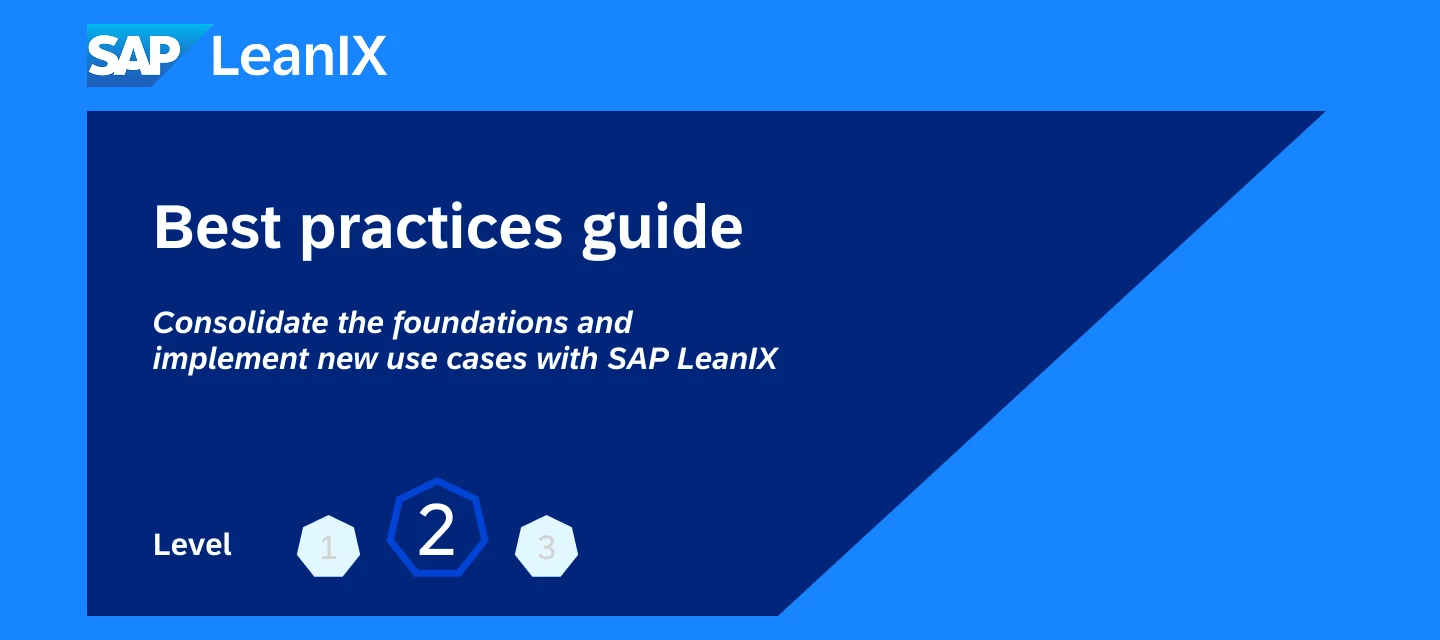Hello Community,
As we continue to guide you in your journey with your enterprise architecture initiatives, please find this second part in the series of Best practices.
In our first post, we gave you the keys to successful onboarding. Today, let’s explore best practices together to define new use cases, maintain the long-term interest of all stakeholders, and optimize governance through collaboration and automation.
Recommendation #1: Priorities and the use cases that result from them
Learn how to effectively define and prioritise your use cases. Learn how to validate your goals with your management, prioritise them in collaboration with your stakeholders and redefine everyone’s responsibilities. Also explore methodologies for streamlining and modernising your application landscape (with Gartner® TIME frameworks and 6R) to reduce costs, improve efficiency, and ensure better governance of your application portfolio.
Recommendation #2: SAP LeanIX adoption - Keep the long-term focus
To maintain the “WOW” effect of early SAP LeanIX presentations, a long-term adoption plan is essential. It is necessary to engage the users and obtain the support of the management.
- Contributors Adoption: Continuous communication and clear definition of responsibilities (RACI) are critical. Use best practices such as continuous learning, recognition of contributions, and transparent communication.
- Management support: Management involvement is essential to align strategic objectives, validate results and ensure financial support. Use dashboards and presentations to show the value of SAP LeanIX and maximise ROI.
Recommendation #3: Governance: Collaboration and Automation
Collaboration and automation are critical to the successful governance of SAP LeanIX.
- Collaboration: Ensure strategic alignment by holding regular cross-functional meetings to discuss goals. Use SAP LeanIX’s built-in collaboration tools and set up governance committees to oversee efforts and encourage buy-in.
- Automation: Improve operational efficiency by automating repetitive tasks to focus on high-value activities. Set up automated workflows for data collection to create even more decision-relevant reports, and deploy automated rules to validate data.
By following these best practices, you can ensure successful adoption of SAP LeanIX, improve governance, and maximise the value of your investment. We hope these tips help you get the most out of SAP LeanIX and evolve your enterprise architecture.
Read more about these tips in the attached document, to dive deeper into the why and how of each of our recommendations.
Feel free to share your feedback and experiences in the comments: what was a success in your organisation or what you could have done differently.
What’s next? In the final post of the best practice series, we will share with you recommendations for organisations with more advanced levels of maturity in enterprise architecture, where we will discuss concepts such as Transformations, Calculations or Integrations. Stay tuned!
Article written by Edhyne Dablé and Claire Le Fichoux



